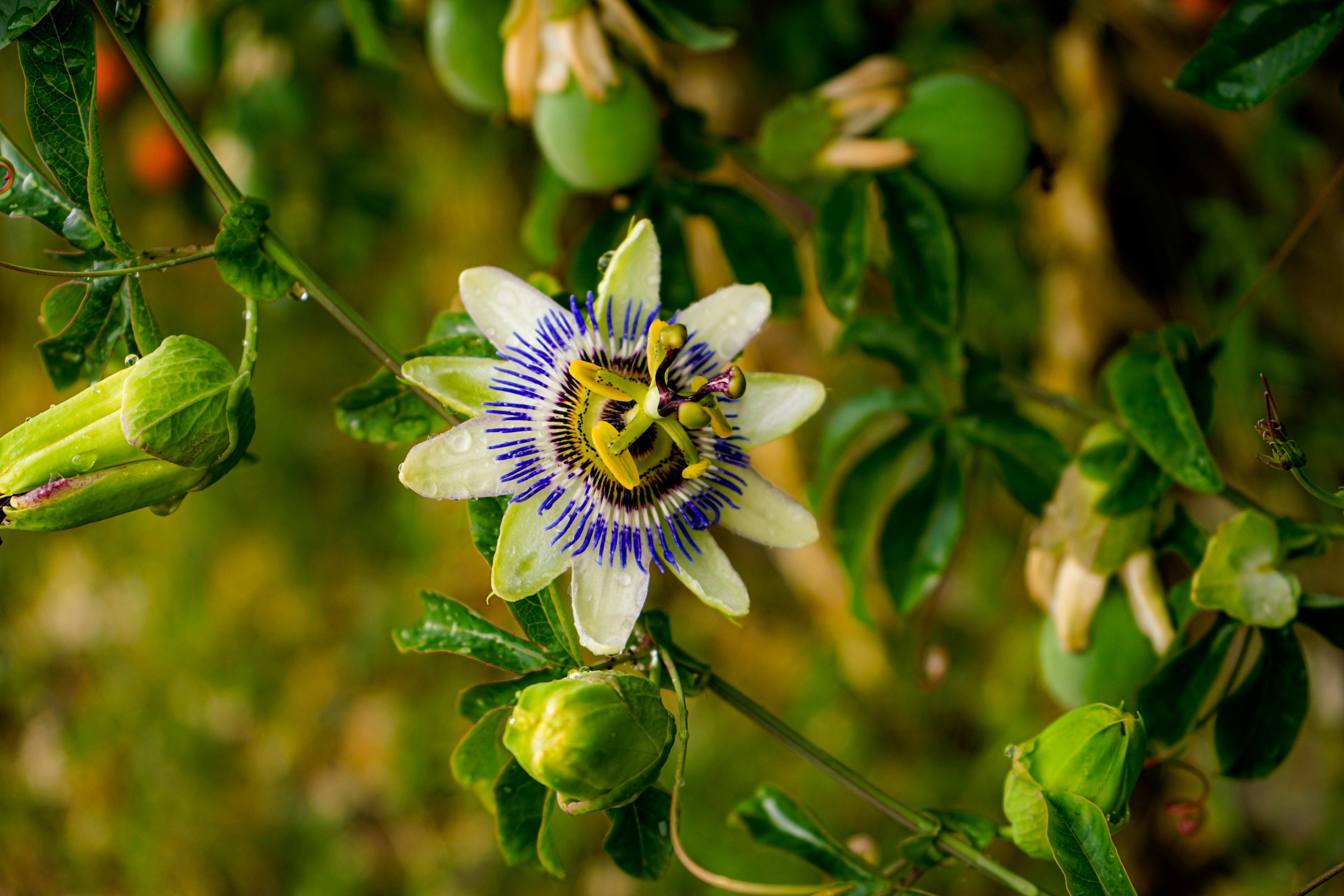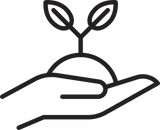Nootropics have quickly become a trendy buzzword, often thrown around with adaptogens or other "magic" formulas that claim to unlock superhuman potential.
While that sounds tempting, let's be honest: nootropics won’t give you X-ray vision or make you fly. But don’t worry—they will help you feel your best in all the wonderfully human ways. Think improved blood flow, less brain fog, and even a mood boost to help fight off those darker days. So, let’s break it down and take a closer look at how herbal nootropics work—and which herbs can be considered nootropics.
 How Herbal Nootropics Work
How Herbal Nootropics Work
Nootropics translate to “working on the mind,” and in essence, that’s precisely what they do. However, how they achieve this varies greatly depending on the specific nootropic.
Herbal nootropics, such as Bacopa monnieri and Lion’s Mane mushroom, work through a broad and complex synergy of compounds. For instance, Bacopa enhances memory by supporting neurotransmitter balance, reducing oxidative stress, providing protection thanks to its “antioxidants”, and inhibiting lipid peroxidation, just to name a few —contributing to both short- and long-term cognitive function. Lion’s Mane, on the other hand, is known for its ability to stimulate nerve growth factor (NGF), aiding in neurogenesis and overall brain resilience.
In contrast, pharmaceutical nootropics like Galantamine (often used for Alzheimer's) have a more isolated and targeted mechanism. Galantamine works primarily by inhibiting acetylcholinesterase, increasing acetylcholine levels in the brain for sharper cognition. While effective, this singular approach can sometimes lead to side effects like nausea or brain fog due to its narrow focus.
The key difference lies in complexity versus isolation. Pharmaceuticals act with precision, often intensely targeting one pathway, whereas herbal nootropics engage multiple pathways, supporting the brain wholistically. Since the human body is inherently complex, herbal nootropics may better align with its natural processes, offering cognitive enhancement while addressing underlying stress, inflammation, and neuroplasticity, ensuring a more well-rounded approach to brain health.
Nootropic Herbs
When working with herbal nootropics, simply picking one from a long list isn’t the best approach—especially if our goal is to address the root cause rather than just the symptoms. Instead, understanding how each herb interacts with the body, its specific mechanisms, energetics, and the best preparation methods allows us to match the right herb to the right person. This mindful approach ensures better results and honors the complexity of the herbs and the individuals using them. Here is a list of some of the best herbal nootropics to help you better navigate which is best for you.
Lions Mane, Hericium erinaceus
Rich in erinacines and hericenones, this white toothed mushroom stimulates nerve growth factor (NGF), a key player in neuron regeneration and myelin repair. By strengthening neural pathways and encouraging the repair of damaged nerves, it’s particularly valuable for those recovering from brain injuries or dealing with cognitive decline, dementia, or neurodegenerative conditions. Unlike many herbs (and mushrooms), Lion’s Mane can cross the blood-brain barrier, meaning its benefits reach deep into the central nervous system where they’re needed most.
Energetically, Lion’s Mane is neutral and slightly moistening, making it well-suited to most constitutions. It’s best consumed as a dual-extraction tincture to unlock its nootropic potential fully, ensuring its water-soluble and alcohol-soluble compounds are bioavailable. While powdered extracts can also be effective, they must undergo proper extraction first—otherwise, the chitin in its cell walls will prevent complete absorption of its medicinal compounds.
Bacopa, Bacopa monnieri
Rich in bacosides, this herb shields neurons from oxidative stress—the relentless wear and tear that can lead to cognitive decline. It helps clear out beta-amyloid plaques, a major culprit in Alzheimer’s, while also acting as a metal chelator, keeping excess iron, copper, and zinc from stirring up neuroinflammation. Bacopa protects the delicate membranes of brain cells by preventing lipid peroxidation, ensuring they stay resilient and responsive. Bacopa nurtures the brain’s chemical messengers, sustaining healthy serotonin, dopamine, and acetylcholine levels—key players in memory, focus, and mood. Studies show it enhances learning, memory consolidation, and even eases anxiety, making it just as valuable for daily mental clarity as it is for long-term cognitive health. Due to its intensely bitter taste, Bacopa is best taken as a tincture or powdered extract—tea is technically an option, but let’s be honest, it’s not one you’ll enjoy. As a bitter, it also cools and can lean more on the drying side.
Rosemary, Rosmarinus officinalis
The beautiful herb of remembrance! Rosemary is my go-to when brain fog and memory decline stem from depression, as it acts not only as a nootropic but also as a mild antidepressant. Its benefits come from multiple angles. First, it is diffused, encouraging blood flow to the brain and peripheral circulation. Its volatile oils, rich in cineole and camphor, are potent circulatory stimulants, waking up a sluggish mind and sharpening focus. Rosemary also contains a powerhouse of antioxidants, including rosmarinic acid, carnosic acid, and carnosol, which protect neurons by reducing oxidative stress and inhibiting acetylcholinesterase. This enzyme breaks down acetylcholine, a neurotransmitter essential for learning and memory.
Energetically, rosemary is warming and drying, making it especially useful for damp, stagnant conditions where mental fog, low energy, or poor circulation are at play. I love working with it as a tea to preserve its aromatic compounds best, though a tincture or freshly ground powder can also work wonders!
Gotu Kola, Centella asiatica
Gotu Kola is a powerhouse of triterpenoid saponins responsible for its profound ability to repair and strengthen connective tissue. These compounds stimulate collagen synthesis, aiding in wound healing, reducing scar formation, and even supporting the integrity of brain tissue following injuries. This regenerative action extends to the cerebral cortex, where Gotu Kola helps restore neuronal connections and mitigate the effects of neurodegeneration.
Beyond its structural support, Gotu Kola enhances circulation to the brain through its flavonoids and pentacyclic triterpenes, improving oxygenation and nutrient delivery. This action reduces neuroinflammation and oxidative stress. Additionally, Gotu Kola modulates GABAergic activity, promoting a calm yet alert state—helping to sharpen focus while soothing nervous tension. Energetically, it is mildly bitter, cooling, and moistening, making it an excellent choice for those with excess heat or dryness. For best results, I prefer nibbling the fresh leaves or drinking a tea, though tinctures also capture its benefits beautifully.
Gingko, Ginkgo biloba
Ginkgo has earned its place as one of the most researched and revered nootropic herbs, however, much of the clinical research has been conducted using standardized extracts, which concentrate its active compounds—meaning a tincture or whole-leaf preparation won’t deliver the same potency. A standardized extract is the best choice for those seeking its full effects. Ginkgo’s benefits stem mainly from its flavones and terpene lactones, including ginkgolides and bilobalide. One of its most unique actions is its ability to inhibit platelet-activating factor (PAF), a compound involved in blood clotting and inflammatory responses. By modulating PAF, Ginkgo helps prevent excessive clotting, reduces the risk of stroke, and enhances microcirculation in the brain, eyes, and extremities. This makes it particularly useful for conditions like age-related cognitive decline, cold hands and feet, and poor peripheral circulation.
Additionally, Ginkgo improves oxygen utilization in the brain, protecting neurons from ischemic damage and reducing neuroinflammation. It also enhances mitochondrial function, which supports energy production in brain cells—making it a valuable ally in preventing cognitive fatigue and age-related decline. Because of its strong circulatory-stimulating properties, I don’t recommend it for younger individuals unless there’s a specific need, as it can sometimes lead to symptoms like bloodshot eyes, headaches, or excessive stimulation. However, for those over 40 or anyone experiencing vascular insufficiency, cognitive fog, or sluggish circulation, Ginkgo is an excellent choice.
Conclusion
Herbs are incredibly nuanced—unlike pharmaceutical nootropics, their actions aren’t isolated to just one mechanism. And that’s precisely what makes them so unique. They work harmoniously with the body, offering a multidimensional approach to brain function.
Remember when I mentioned how adaptogens are often paired with nootropics? That’s because they’re a dynamic duo. While nootropics enhance circulation and sharpen cognitive function, adaptogens help the body adapt to stress, restore a depleted nervous system and reconnect you with the natural energy already within you. This synergy is why we’ve combined both in our Brain Boost tincture—bringing you the best for resilience, clarity, and long-term brain health!













Leave a comment